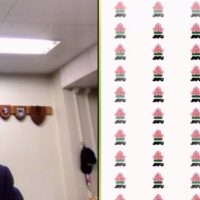The Japan Rugby Football Union announced Friday that a total of 25 teams — including 12 top-division clubs — will participate in the new domestic top circuit scheduled to kick off in January 2022.
After initially estimating that the first division would comprise between eight and 12 clubs, the sport’s national governing body chose the larger number based on the expectation that it would be able to offer close, competitive contests to the fans.
Mayumi Taniguchi, the director of the new league’s development office, said that the decision had been made to start with 12 teams after studying recent Top Team seasons and determining that a bigger division would contribute to high-quality play.
Sixteen teams currently compete in the Top League, which has seen its 2021 season delayed until February after several clubs were struck by COVID-19 cases. All current Top and Top Challenge League teams have applied to join the new circuit.
The new league’s first division will be divided into two conferences. Each team will play two games against opponents in the same conference and one game against opponents in the other conference during the season. The league champion and final standings will be determined without a postseason, based on the total number of points.
Division and conference assignments — as well as the new league’s official name — are expected to be announced in June.
The second and third divisions will have seven and six teams, respectively. There will be promotion/relegation playoffs between the divisions.
The league will be a mix of professional, corporate and amateur teams. But clubs will be asked to earn their own revenues under the new league system, one of the major differences from the current Top League. Teams will be required to secure their own home stadiums and the league will encourage higher levels of fan engagement including greater use of social media.
The league will allocate the teams based on the feasibility of their business structures as well as their Top League and Top Challenge League records going back to 2018.
“We have decided to install this format based on the commitment of developing our national team, so we need to offer games with parity and high quality,” Taniguchi told an online news conference. “We would like to make sure we achieve the goal of profitability. We also wanted a format that will be easier for fans to understand and embrace.”
Another major project for the league and union will be “cross border” fixtures, in which the league’s top finishers will be able to compete against teams from other leagues around the world with the purpose of developing the game in Japan.
JRFU Chairman Kensuke Iwabuchi said that the organization is currently in negotiations with overseas leagues and unions regarding those matches.
“It’s hard to say how many teams will end up participating,” Iwabuchi said, “But we have hammered out that we want to make this league the world’s best stage.”
Japanese rugby officials pushed for the new league in earnest following Japan’s best-eight finish at the 2019 Rugby World Cup, in the hopes that sustained development would help Japan reach the semifinals and beyond.
Taniguchi said that the league is committed to long-term development and will be flexible in modifying its format and regulations, with the first three seasons from 2022 considered the initial phase.




















With your current subscription plan you can comment on stories. However, before writing your first comment, please create a display name in the Profile section of your subscriber account page.